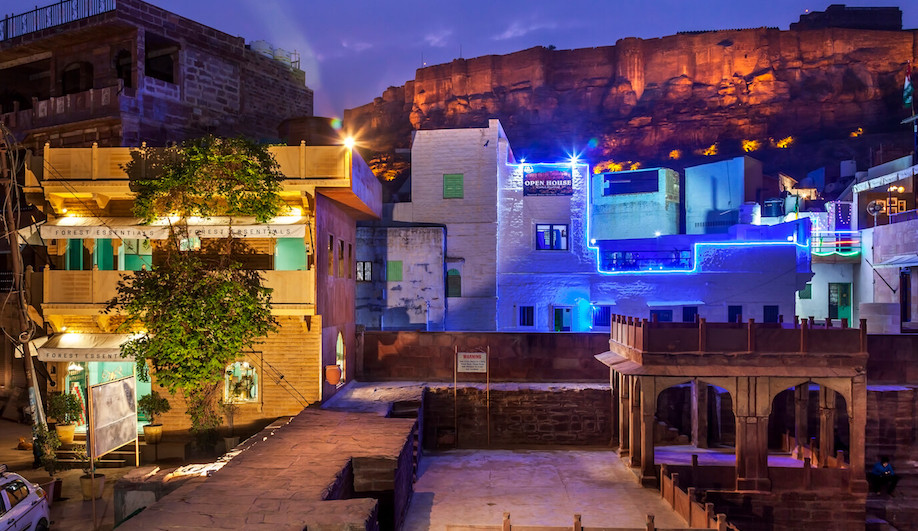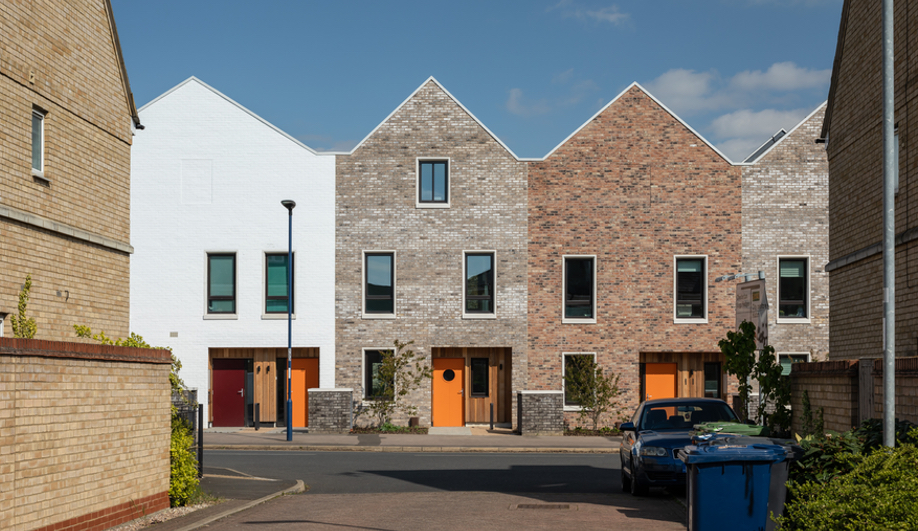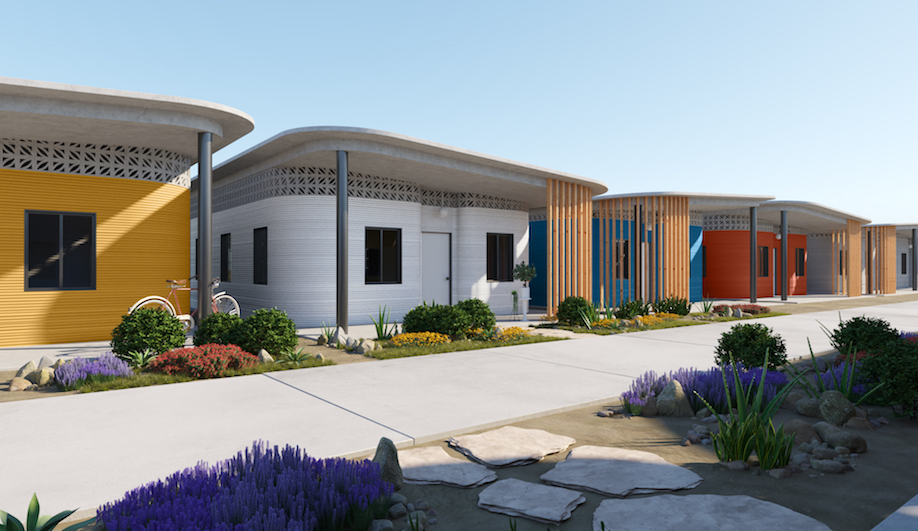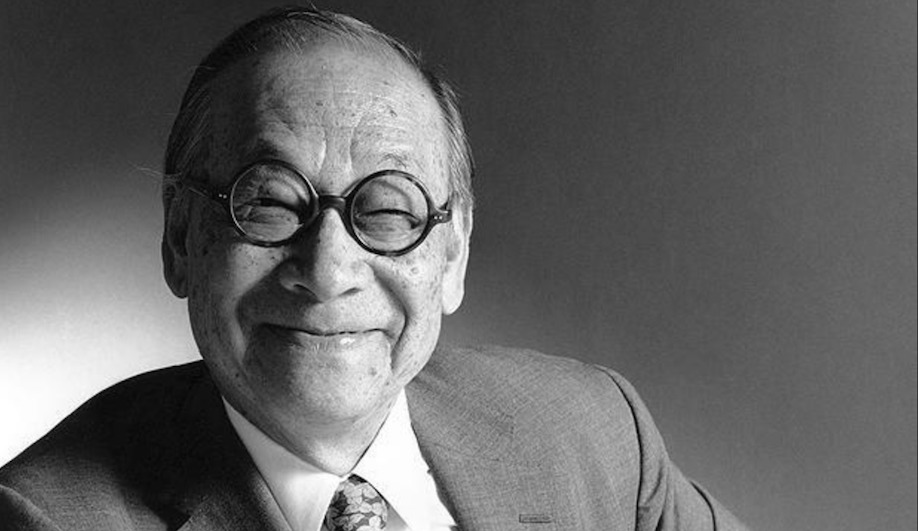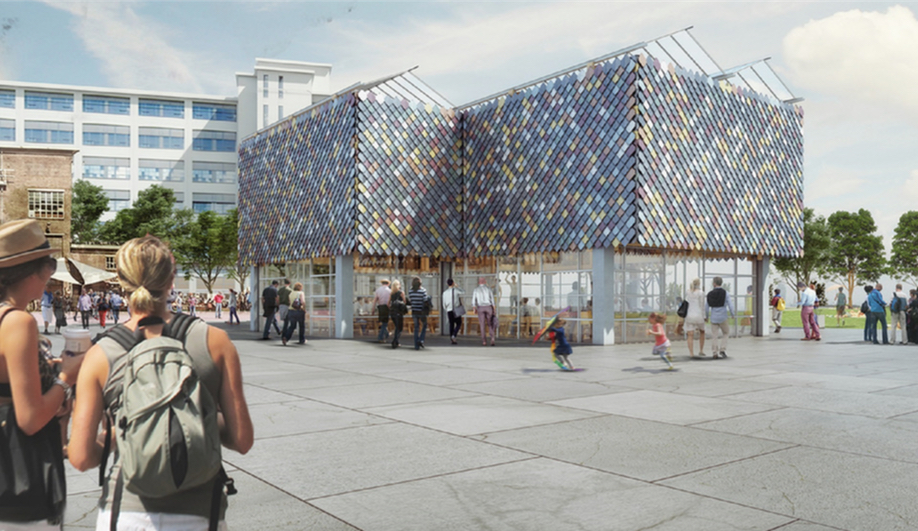
The centrepiece of Dutch Design Week is a bold, temporary experiment in material reuse.
When we visited Eindhoven, Netherlands leading up to Dutch Design Week, designers were getting noticeably frantic as a city of 220,000 prepared to play host to some 300,000 visitors. In the neighbourhood of Strijp S — once a designed community for Philips employees known colloquially as “The Forbidden City”, now a gentrifying hub of creative activity — you might think they would be a little further along with the construction of the centrepiece People’s Pavilion. Weeks before the event, however, there were just a few wooden beams up out there in the square.

Now in its 16th year, Dutch Design Week will showcase the work of some 2,500 designers over its nine days from October 21 to 29. It will feature more than 300 exhibitions and 420 events on topics ranging from design management, food design, spatial design, textiles and more.
As Dutch Design Foundation program director Tim Vermeulen tells Azure, though it has grown into the biggest design event in northern Europe, it’s not so much a traditional product showcase as an expo of the kind of Dutch design thinking that will likely influence products hitting the market five years from now. “It’s not about pushing sales,” he says. “It’s really about living what is happening in terms of how the future can develop and how design can contribute to it.”
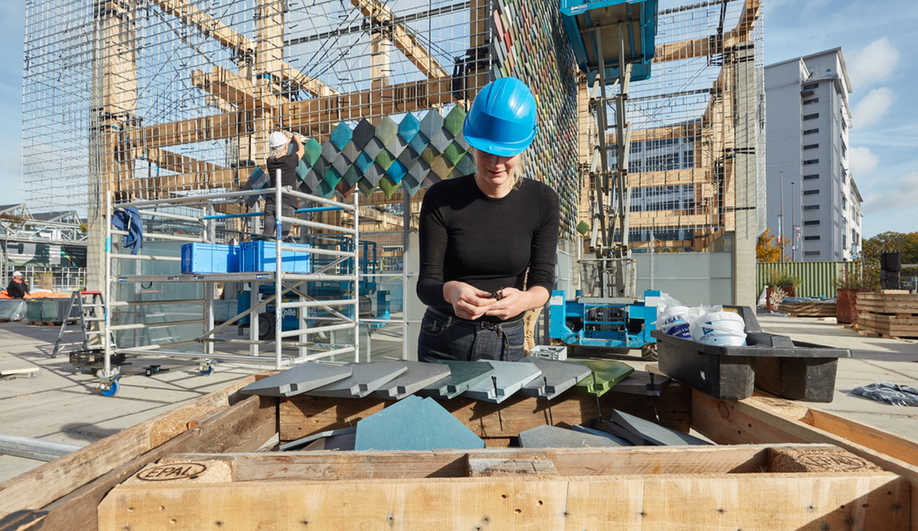
The People’s Pavilion will serve as the central meeting place for the week, holding up to 600 people for a variety of talks, plays and discussions from the World Design Event series. This is no small project – as Vermeulen says, “we’re building an iconic building, in only a very short period of time, with a completely new process.” However, Hester van Dijk, partner at design studio Overtreders W, seems less stressed about this than us. The whole point of this temporary pavilion, she says, is to embrace the ephemeral: to build something quickly not just with recycled materials, but to create no waste at all, using only things you’re going to give back when you’re done.
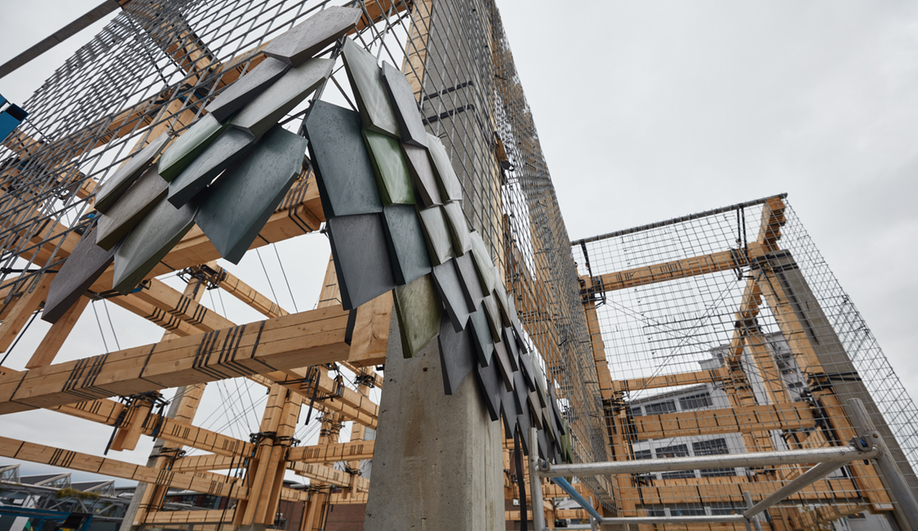
Because nothing can be nailed, the structure is formed from standard wooden beams, strapped together with steel strips normally used to bind pallets. 9,500 vibrantly coloured interlocking plastic tiles (above) serve as striking shingles around the top of the building, recycled from PET bottles donated by local residents. The tile design is called the Pretty Plastic Shingle, and it was made by recycler Govaplast.
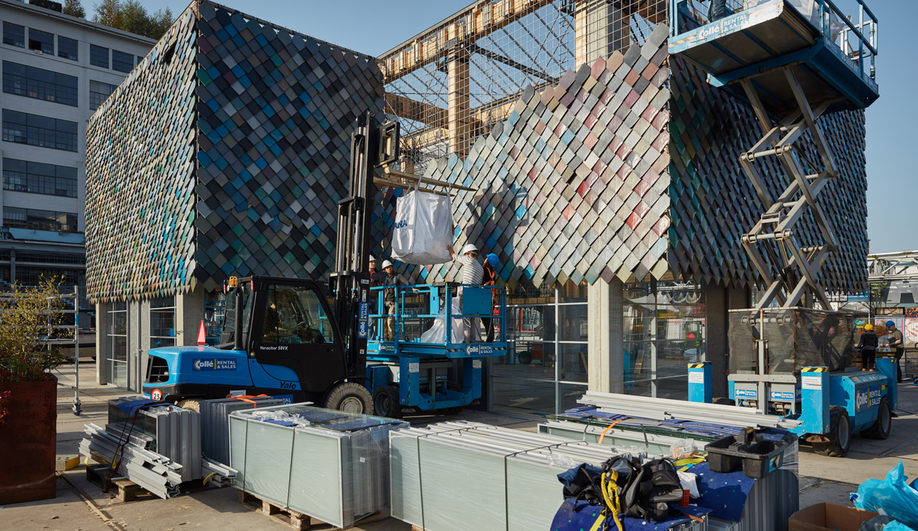
Vermeulen tells us that these will hopefully be used as cladding for other projects in the city, though anybody who donated plastic is also welcome to take it back in the form of a tile.
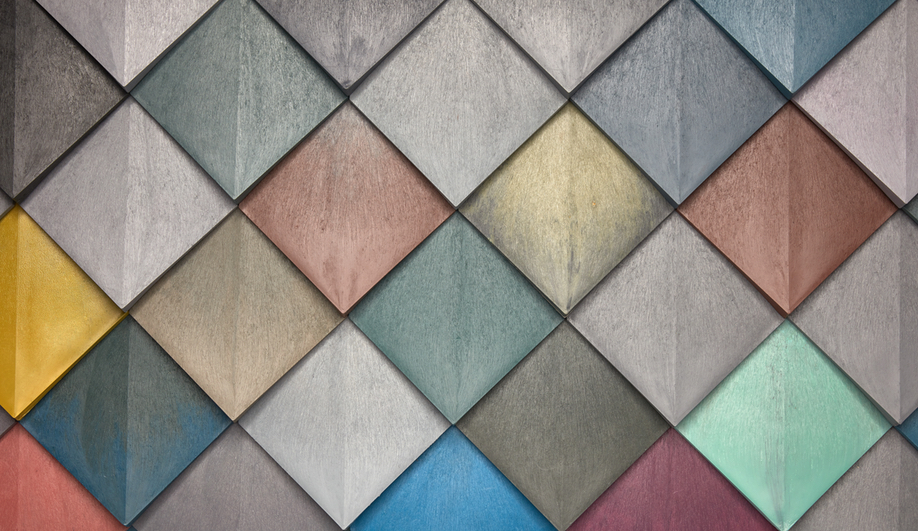
“This is an extreme exercise in circularity,” he says. “For us this is quite fun because we usually only show design, or connect designers with industry. This is our own experience lab where we are the guinea pigs.”
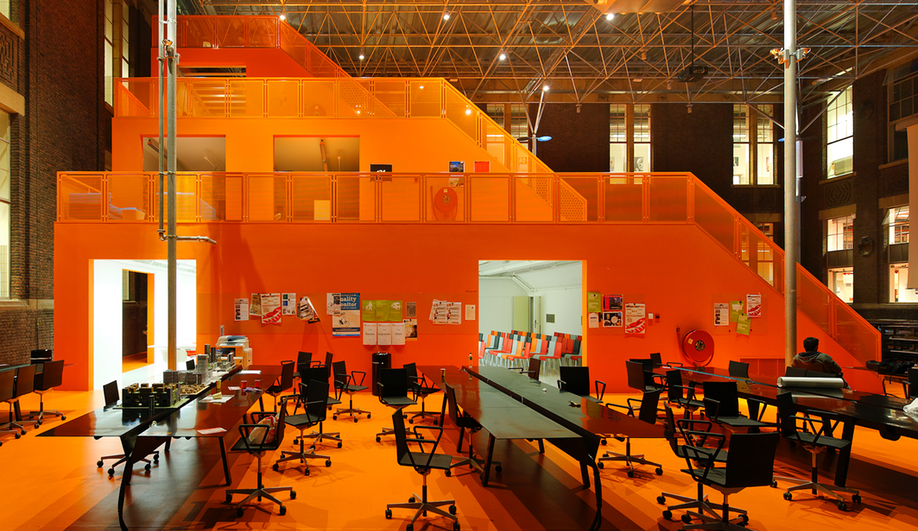
The Why Factory, led by MVRDV’s Winy Maas, explores what makes cities “wonderful, porous, adaptable, transparent, fast, biodiverse and fun.”
With this many events or showcases around Eindhoven, the Dutch Design Week programme is stuffed to the mushroom gills with offbeat occurrences. The best way to navigate is to follow the suggested routes curated by friends of the event, such as Winy Maas of MVRDV’s exploration of future cities (above) or Atelier NL’s interrogation of design’s understanding of “value.”
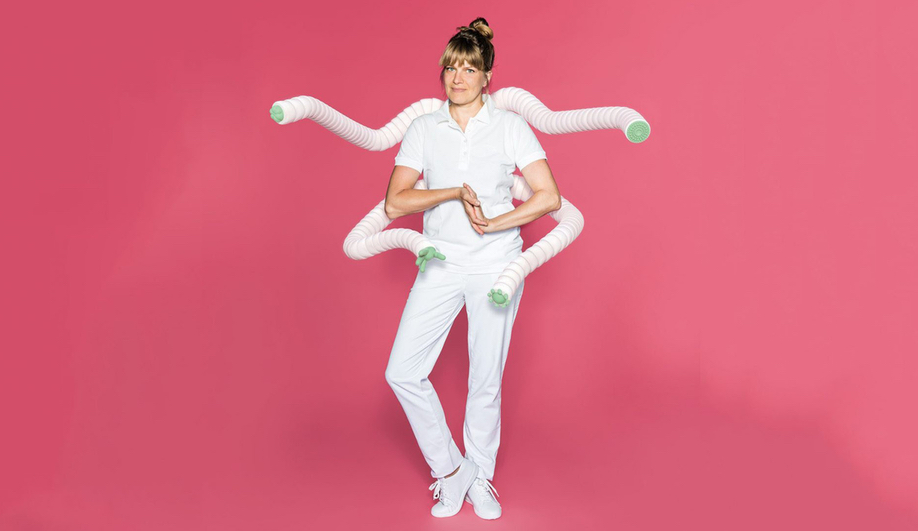
HUBOT, an exhibition on Atelier NL’s The Nature of Value route at Dutch Design Week, examines how robots can make work more enjoyable, productive and humane.
The city has many off-site design hubs that are open to the public and professionals year-round beyond Design Week – Strijp S, Sectie C or even Piet Hein Eek’s spectacular workspace and factory.
“Every abandoned building, every shop in town has something going on,” Vermeulen says. “It’s mainly younger designers going to the effort of showing their work and explaining what they’re doing. Dutch design takes its dialogue with an audience very seriously, even if it challenges your ideas of what is a useful product.”

